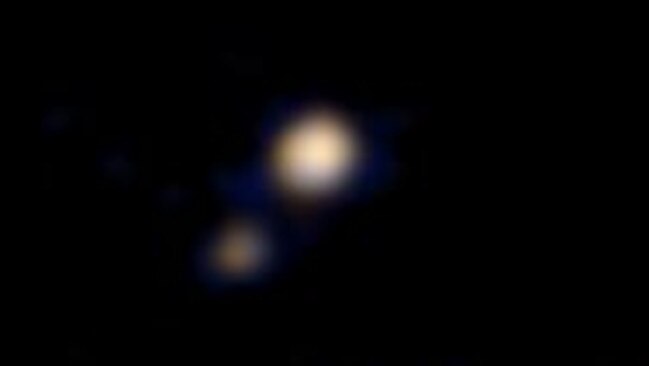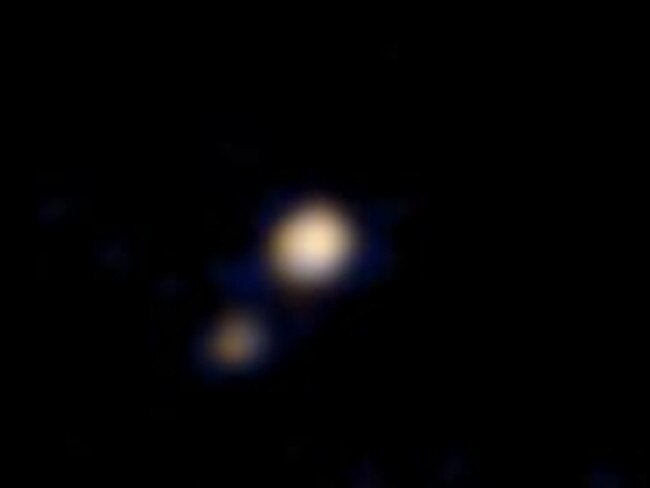NASA’s New Horizons probe provides first ever colour image of dwarf planet Pluto
IT might not look like much, but this colour photo is the result of decades of work and billions of dollars. And it comes just before the space event of the year.

DOWNGRADED to a dwarf planet, Pluto remains a fascination for astronomers, scientists and a space-loving public.
NASA’s New Horizons probe, which is bearing down on Pluto, has captured the first colour image ever made of the Pluto system by a spacecraft on approach to the distant dwarf planet.

The picture, just released by the US space agency, shows a reddish world accompanied by its biggest moon, Charon, which is the size of Texas (the second largest state in the US at 696,200km sq.
“The image was made from a distance of about 115 million kilometres — roughly the distance from the Sun to Venus,” John Hopkins Applied Physics Laboratory said in a statement.
New Horizons is set to barrel past Pluto on July 14 with the encounter predicted to be the major space event of the year.
WHAT DOES PLUTO LOOK LIKE UP CLOSE
It will acquire a mass of data that it will then return to Earth very slowly over the course of the next 16 months.
At the current separation of nearly five billion km, it takes 4.6 hours for radio signals to come back. And the bit rate is painfully slow, BBC News reported.
New Horizons, which was launched in 2006, will complete the reconnaissance of the “classical nine” planets of the Solar System. It snapped epic images of Jupiter in 2006 and 2007.

It is not since the Voyager 2 satellite passed Neptune in the late 1980s has a new world been revealed up close in the same way as will occur in mid-July.
The best pictures of Pluto to date are from the Hubble telescope.
“They are just blobs that make it very hard to discern anything of scientific certainty,” wrote BBC Science Correspondent Jonathan Amos.
When New Horizons flies by Pluto on 14 July, its Ralph colour imager will deliver colour images that show surface features as small as a few kilometres across.
“The spacecraft is in perfect health; it’s full of fuel; and it’s carrying a scientific arsenal of seven instruments that are combined the most powerful suite of instruments ever brought to bear on the first reconnaissance of a new planet,” said Alan Stern, New Horizons principal investigator.
“Nothing like this has been done in a quarter of a century and nothing like this is being planned again by any space agency.
“This is a real moment in time for you to watch us turn a point of light into a planet.”



